[CASE STUDY] How Spitfire
While the rest of the auto industry declined by 2.3% over the same period, Spitfire Inbound &...
21 Dec 2018
This case study illustrates how the use of data obtained through HubSpot positively impacted online engagement with Suzuki’s personas and how the insights and tools enabled exceptional growth between the months of June and November 2018.
Using a data-driven approach, Suzuki Auto South Africa (SASA) increased engagement, provided the ROI results needed for their marketing strategy, and guided their decisions going forward. The data provided not only guided their online environment, but also the offline environment. The impact of this increase in engagement and the use of data provided through HubSpot with insights from Spitfire Inbound resulted in an 16 % increase in trackable online customers and an overall 76% increase in customers who opted into marketing communication.
Suzuki Auto South Africa (SASA) performed incredibly well in 2017, the inbound marketing strategy had gained traction and the fruit of their inbound strategies had begun to flourish. Naturally, we pushed for greater results, and 2018 sparked a need to focus on sustainable growth strategies to produce long-term results. Spitfire Inbound worked hand in hand with Penquin (the lead agency for SASA) to implement campaigns and track online engagement.
SASA aimed for greater online engagement while continuing on their inbound journey of being helpful, relevant and personal and ultimately of selling more cars and increasing their market share. Suzuki had embraced the consumer-centric mindset and wanted to capitalise and optimise on it further throughout the buyer’s journey. Having won Consumer Awards Brand of the Year for two consecutive years, with the Vitara winning Compact Family Car of The Year in 2017 and 2018, the Suzuki Celerio winning Budget Car of the year in 2017 and the Ignis taking this title in 2018, Suzuki topped this off with the New Suzuki Swift and the Suzuki Jimny both being named finalists in the 2019 Car of the Year. This was a great place for a car brand to be, receiving accolades from their consumers and motoring journalist alike.
“(Our) campaign goal is to engage with our customers more. To make them realise that we are humans at the end of an automated system.” - Megan MacDonald, Head of Marketing and PR at Suzuki Auto South Africa
To answer the following questions:
How do we capitalise further on the substantial results achieved with HubSpot and engage further with users in a way that is meeting market and persona needs?
How do you further integrate our offline, more traditional marketing campaigns?
At an executive level, Suzuki was challenged to further drive results and show return - the executive team was used to seeing good results, how can the marketing team keep impressing them?
This challenge opened up a world of further opportunities and enhanced growth within Suzuki Auto South Africa.
With all this growth, Suzuki aimed to continue to engage with their audience and their now loyal fan base - in other words, making their audience feel as valued and important as they are seen within the business.
One word… DATA. We were able to solve and meet Suzuki’s opportunities through a data-driven approach. Segmentation and insights into the data allowed Suzuki to:
Improve engagement, drive more personal strategic decisions on content delivery and where we should advertise to reach potential Suzuki buyers
Integrate offline and online efforts in order to analyse and improve/ optimise offline campaigns in a way that still follows the inbound marketing methodology and attracts more visitors to become prospects. Working alongside Penquin, SASA’s lead agency, we needed to provide integrated campaigns that were data driven.
Delight prospects and customers to become promoters of the Suzuki brand.
The numbers don’t lie, and it is clear that Suzuki has managed to improve engagement with all users along the buyer's journey. Just to showcase a few numbers:
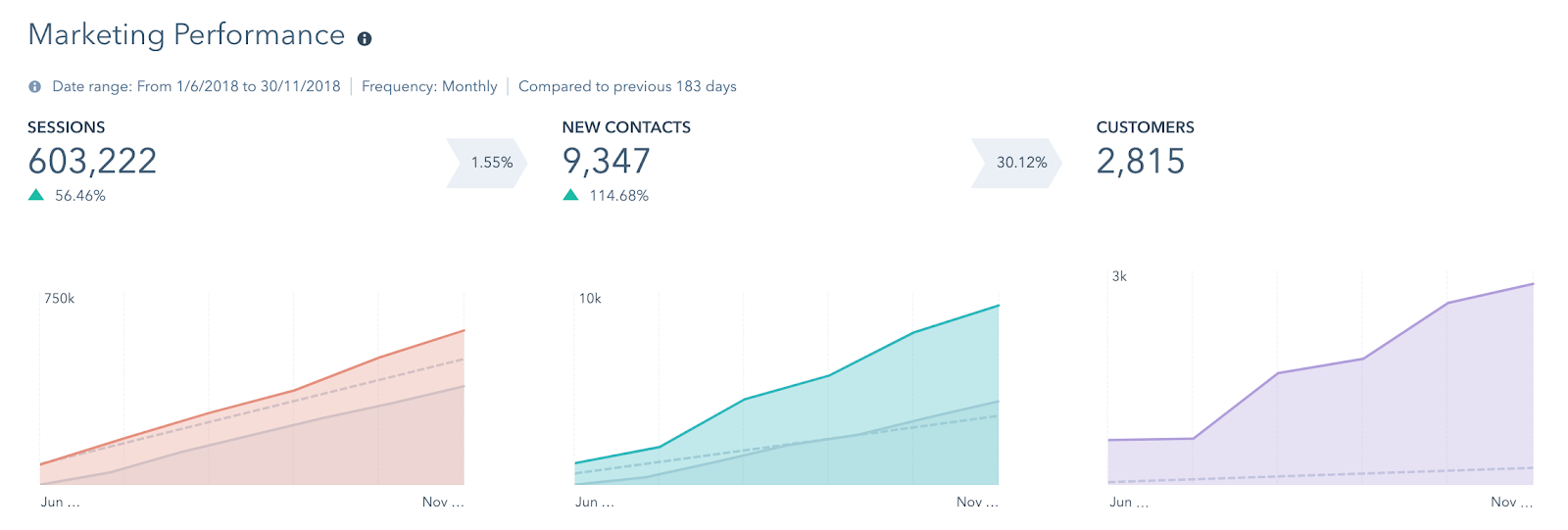
From June - November 2018 (compared to the previous period) there were the following changes:
56.46% increase in sessions,
114.68% increase in contacts and
75% increase in customers.
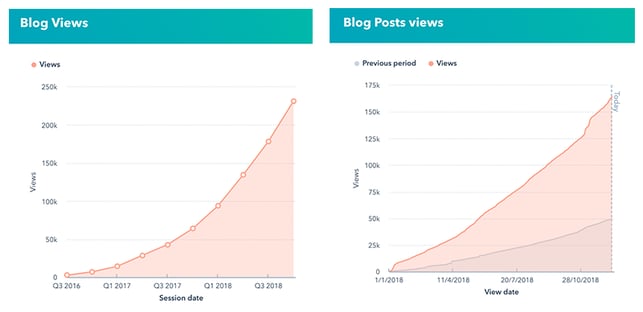
65% increase in blog subscribers.
Blog views went from 61 006 per month at the end of the last period to 97 818 per month in November - a 60% increase
Social media followers increased across the majority of their platforms in this same time period. Facebook, a key platform for SASA, grew its followers by 16.9%.

But how did this actually happen? As Suzuki’s database grew, we optimised communication and content through data segmentation, growing understanding and insight which lead to increased personalisation.
“One of the keys that unlocked growth for Suzuki was the power of understanding our customers and prospects”, says Nicole Sengers, Principal Inbound Marketing Strategist at Spitfire Inbound, “The ability to understand the needs of the consumer allowed Suzuki to nurture their prospects and help them to uncover their real needs. South Africans all say they want fast, sexy looking cars but the data South Africans have provided us with say that people buy cars because they are safe, reliable and easy and cost effective to maintain. Our Suzuki nurturing and content strategies align with the real needs of our consumers.”
We segmented by persona, lifecycle stage, lead score and vehicle that people were interested in which meant that we could talk to contacts at the right stage of their buyer persona and more importantly, we could talk about topics that really interest them. After having created over 800 lists we have been able to put personal touches on our emails, adwords campaigns and more.

The data we have gathered about our customers since implementing an inbound marketing strategy was put to use in various ways to strengthen, personalise and segment our automated emails. We wanted to send emails to consumers that would be more engaging and personal and implemented various automation strategies to achieve this goal.
We implemented a workflow that asked leads to subscribe to our blog, personalising the emails by segmenting them by the content offers a user had downloaded. The number of emails and the content were personalised based on the content the person had previously downloaded.
We also segmented our nurturing emails by persona. Knowing the persona assisted us in really engaging with potential customers, appealing to the cars we thought they would be interested in and engaging with them based on the needs we know our personas are facing.
The use of lead assignment workflows allowed us to remove one step between the website and the customer. Previously leads went from form submission>>A contact at Suzuki>>A contact at the dealership>>Called the customer. But now the leads go from the website form submission >>a contact at the dealership. This also means that we can see which dealers are opening the leads and can ensure that the leads get actioned.
The addition of what we call “great to meet you” workflows allowed dealers to trigger a mail to a customer who came into their dealership. This email allowed the dealers a standardised way to reach out to contacts and ensure that all contacts know how to contact them easily.
By understanding topical needs and searches, we were able to provide and achieve:
Our instalment calculator (tool) achieved a 73% CTA click-through rate in email campaigns. Again - our focus on our user's needs.
One of our most viewed content offers and blogs, “Should you keep a travel logbook?” achieved a 21% CTA click-through rate
The “Don’t panic! Here’s what to do in an accident [checklist]” - has had a 40% CTR - it offers users the ability to view or download the checklist or email it to themselves out of convenience.
75% increase in organic page views
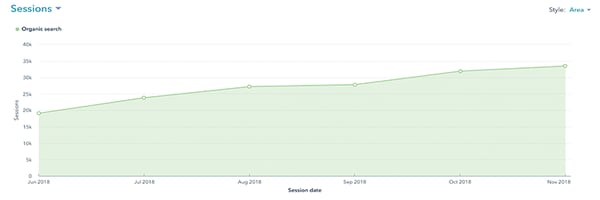
With this, we were able to provide insight into the individual and not only the persona. In a highly automated world, providing our prospects and customers with what they want makes them feel important and unique. We ensure that although we use HubSpot to send out automated emails, a person is always there to respond if they choose to reply.
In our database management campaign (our re-engagement campaigns) where we reached out to our contact to ensure that they wanted to remain on our mailing list we actually had an increase in subscribers as opposed to a decrease - not the result we were expecting but one we were very happy with!
Megan MacDonald, Head of Marketing and PR at Suzuki Auto South Africa, describes the impact of this in detail in the video below. She sees this as being able to be more personal with the customer and making them feel important. This has taken Suzuki to the next level by engaging in a way that is more personal and less “persona”. Trust us when we say, we love our persona data, but with more data and more information, we have been able to engage on a level that is more and more customised to fit individual needs - the key here is “individual”. At Suzuki, there is a mindset whereby making a difference to each and every individual and treating them as such, is more important than being simply “loud” in the auto marketing world.

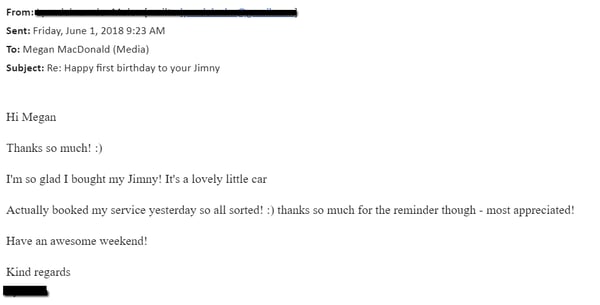
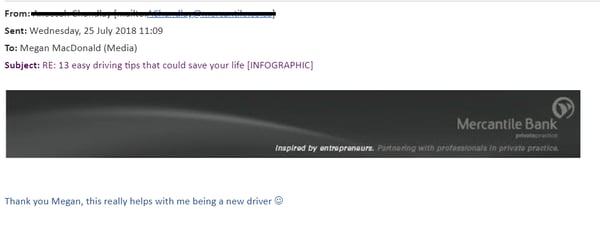
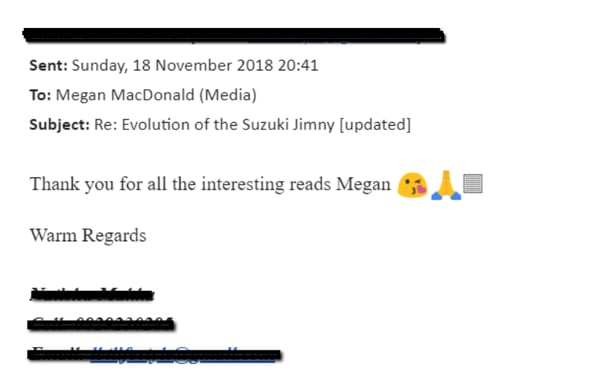
With the power of data and its effects on engagement, Suzuki has now developed an approach of calculating an offline campaign success through online engagement metrics. HubSpot provides the opportunity to look into the ROI of a campaign and opens up a world of possibilities when it comes to offline events and activations.
“I ensure that all campaigns are linked to HubSpot data - I make all marketing business decisions based on the data from HubSpot,” says Megan.
Ever since utilising HubSpot, Suzuki has managed to analyse which campaigns benefit the company and which don’t. It helps answer hypothesis and has set a foundation to do further research.
We can illustrate this with an offline campaign that is particularly close to our hearts - the new Jimny launch campaign.
We realise that sometimes we need to take it a step back, to ask at the source and not speculate our personas needs. So this is where the Jimny launch began, We started by creating a questionnaire and asking our personas what it is that set their soul on fire and we decided to provide them just that in our launch.
We received 1725 submissions on our questionnaire which was a series of consumer insight questions- consumers were willing to give away so much information to be involved in the Jimny launch. We segmented the answers by 11 properties. This allowed us to create and optimise the offline campaign by understanding the likes and interests of the Jimny personas. This information drove three key areas.
Stock orders and planning - we asked what colours and model types people were interested in buying and use this data to help drive product planning.
We used the data to understand what kinds of events and activities we should be involved in when advertising the Jimny.
Finally, we used these insights to help create personalised communication to the different types of Jimny fans. We conducted an automated email campaign - which we had not been able to do when we launched the previous version Jimny.
Over time the Suzuki team has grown reliant on the data we can gather in HubSpot - every campaign we do relies on HubSpot data more. When we launched Ignis in June 2017 - we used persona data to drive billboard placements. When we launched Swift in May 2018 - we used persona data to plan billboard placements, track influencer activity, report on the various publications where we advertised Swift and even looked at the events we planned and aimed to track those. We also tracked dealer engagement via personal forms for dealer leads," says Nicole Sengers, Principal Inbound Marketing Strategist.
This philosophy spoke through their content and within a six month period (1st of June and 30th of November), Penquin and Spitfire Inbound were able to achieve the following results for Suzuki:
Increase sessions by 56%
Increase in contacts by 114%
14% increase in customers from online sources that have opted into marketing communication.
60% increase in blog views
65% increase in subscribers
788 contacts completed a content offer in this 6 month period - 80.57% increase in contacts who downloaded a content offer over the period
With an even greater amount of people in the portal and customers, Suzuki has grown their database with 154% increase in leads, 158% increase in SQL’s and 266% in MQL’s which resulted in 73% increase in customers.
This also increased the use of surveys and additional questions to gather persona information. We had only 12.8% of the database who gave us their persona information over the previous 6 months but in the period 1 June - 30 Nov 2018 we gathered persona information for 30% of contacts, an 134% increase. 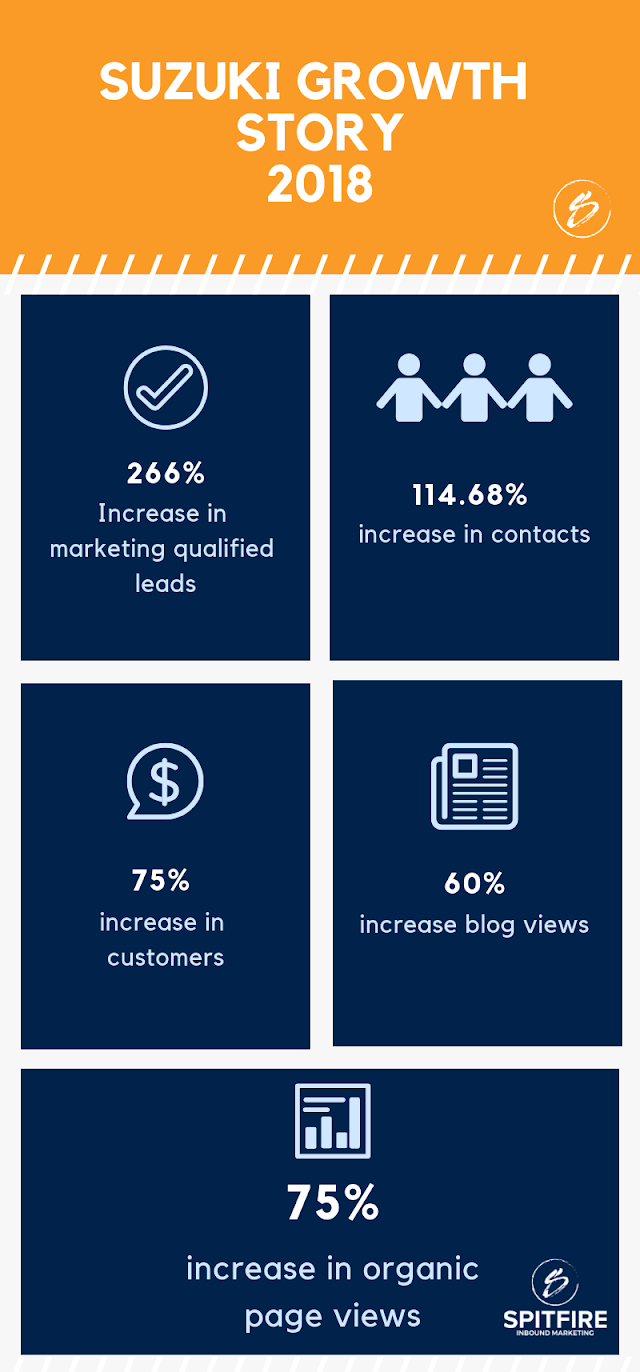
“That’s another thing that HubSpot has given us, what to make and what customers want to see. It’s not just about what we want to do,” says Megan.
We have used surveys and progressive profiling to gather more data about our customers and prospects. This has allowed us to tailor our content strategy (blogs, email, social media website and offline content) to the needs of our Suzuki buyer personas which has allowed us to attract Suzuki personas to the brand and helped us to sell more cars. Asking for feedback has moved Suzuki as a brand one step closer to their customers. Knowledge on their consumer behaviour and needs will continue to open up more and more possibilities for Suzuki growth going forward.
HubSpot opens the door to countless possibilities, especially because it is built to put the customer first. Our campaign analytics drives us to continuously improve, and in this highly automated world, make our Suzuki customers feel “special” with our personalised approach.
Contact us today to start getting increased ROI on your marketing efforts.
While the rest of the auto industry declined by 2.3% over the same period, Spitfire Inbound &...
Discover how Spitfire Inbound adapted during the pandemic, increasing new contacts by 379% through...
South African agencies Spitfire Inbound and Penquin are proud to announce that together they have...
In a rapidly changing industry with a small marketing staff, Initial Hygiene Services South Africa...
Be the first to know about new B2B SaaS Marketing insights to build or refine your marketing function with the tools and knowledge of today’s industry.